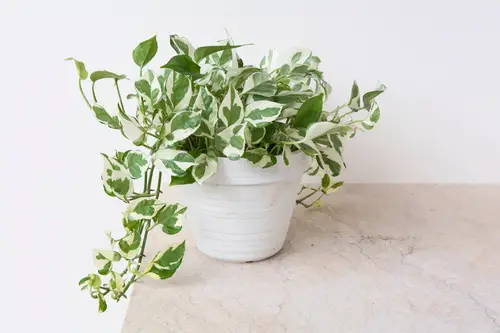Small white spots on leaves can be a sign of various diseases, pests, or nutrient deficiencies. These spots can appear on both indoor and outdoor plants, affecting their health and appearance. It is important to identify the cause of white spots on leaves to determine the appropriate treatment and prevent further damage.
Understanding the causes of white spots on leaves is crucial in treating and preventing plant diseases. Some common causes of white spots include powdery mildew, downy mildew, and leaf spot diseases.
These diseases can be caused by fungi, bacteria, or viruses, and can spread quickly if not treated promptly. In addition, pests such as spider mites and whiteflies can also cause white spots on leaves, which can weaken the plant and make it more susceptible to disease.
Key Takeaways:
- Identifying the cause of white spots on leaves is important for proper treatment.
- Common causes of white spots include diseases, pests, and nutrient deficiencies.
- Treatment methods vary depending on the cause of the white spots and prevention strategies can help avoid future outbreaks.
Other related posts on this category:
- White Spots on Shamrock Plants Leaves
- White Spots on Rubber Plant Leaves
- White Spots on Rose Bush Leaves
Understanding White Spots on Leaves

White spots on leaves are a common symptom of various plant diseases and pests. These circular white spots can appear on the upper or lower side of the foliage and can be caused by a range of factors such as fungi, bacteria, viruses, or insects.
Understanding the symptoms and causes of white spots on plant leaves can help in identifying and managing the problem.
The appearance of white spots on leaves can vary depending on the underlying cause. Some white spots may appear as small, powdery patches, while others may be larger and more irregular in shape. In some cases, the white spots may be accompanied by other symptoms such as yellowing, browning, or wilting of the leaves.
Fungi are a common cause of white spots on plant leaves. Powdery mildew, for example, is a fungal disease that can cause white, powdery spots on the leaves of various plants.
This disease is often caused by high humidity or excess moisture, which promotes fungal growth. Other fungal diseases that can cause white spots on leaves include downy mildew, leaf spot, and rust.
Bacteria and viruses can also cause white spots on plant leaves. Bacterial leaf spot, for instance, is a disease that can cause circular white spots on the leaves of many plants.
This disease is often spread through contaminated water or soil. Viral diseases such as mosaic virus can also cause white spots on leaves, along with other symptoms such as stunted growth and distorted leaves.
Insects can also cause white spots on plant leaves. Spider mites, for example, can cause small, white spots on the leaves of many plants. These pests suck the sap from the leaves, causing them to turn yellow and eventually die. Other insects that can cause white spots on leaves include whiteflies, mealybugs, and thrips.
Small White Spots on Leaves – 3 Common Problems
Small white spots on leaves can be caused by a variety of factors, including fungal infections, pests, and environmental factors. In this section, we will explore each of these causes in more detail.
1. Fungal Infections
One of the most common causes of white spots on leaves is fungal infections, such as powdery mildew. Powdery mildew is a type of fungus that appears as a white, powdery coating on the leaves of plants. It is often caused by high humidity levels and poor air circulation. If left untreated, powdery mildew can cause leaves to wilt and die.
Other fungal infections that can cause white spots on leaves include downy mildew and leaf spot diseases. These infections are often caused by overwatering or poor drainage, which creates a moist environment that is ideal for fungal growth.
2. Pests

In addition to fungal infections, white spots on leaves can also be caused by pests such as spider mites. These tiny pests feed on the undersides of leaves, causing white or yellow spots to appear on the upper surface of the leaf. Other pests that can cause white spots on leaves include whiteflies and mealybugs.
3. Environmental Factors
Environmental factors such as sunburn, high humidity, and stress can also cause white spots on leaves. Sunburn occurs when plants are exposed to too much direct sunlight, causing the leaves to turn white and eventually die. High humidity levels can also cause white spots on leaves, especially if there is poor air circulation.
Stress, such as from drought or too much water, can also cause white spots on leaves. When plants are stressed, they may not be able to absorb nutrients properly, leading to the development of white spots. Poor soil quality and nutrient deficiencies can also contribute to the development of white spots on leaves.
Identifying Specific White Spot Diseases
Small white spots on leaves can be caused by a variety of fungal diseases. Identifying the specific disease is important for effective treatment. Here are some of the most common white spot diseases and how to identify them:
1. Powdery Mildew
Powdery mildew is a fungal disease that appears as a white, powdery coating on the leaves. It can affect a wide range of plants, including vegetables, fruits, and ornamentals. The disease thrives in warm, humid conditions and can spread rapidly in crowded plantings.
To identify powdery mildew, look for a white or grayish coating on the upper or lower surfaces of leaves, stems, and flowers. The spots may also be accompanied by yellowing or browning of the affected foliage. In severe cases, the leaves may curl or distort.
2. Downy Mildew
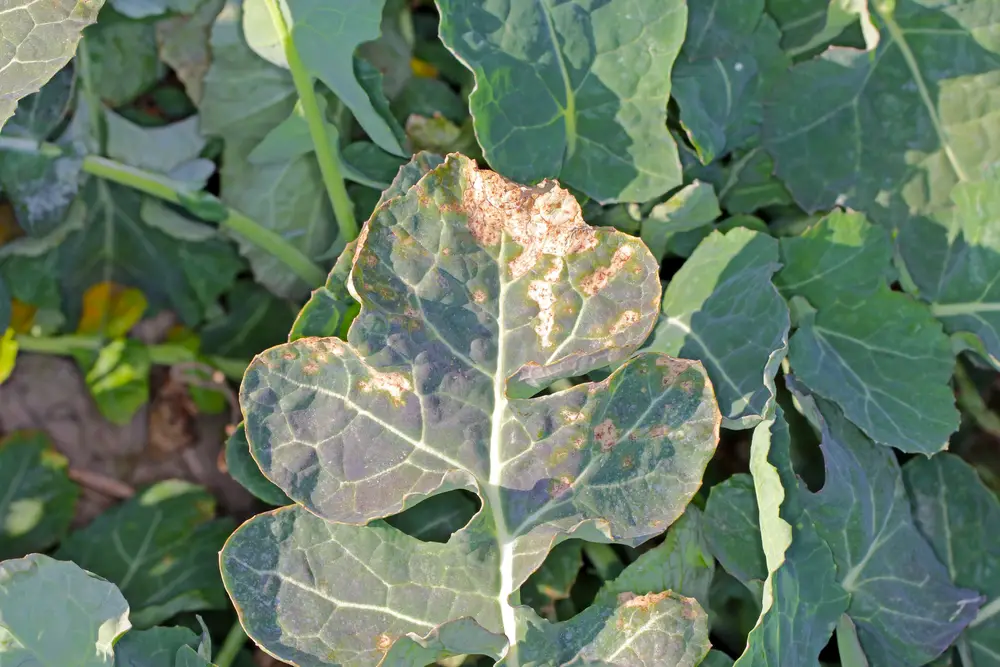
Downy mildew is another fungal disease that can cause white spots on leaves. It is most common in cooler, wetter conditions and can affect a variety of plants, including vegetables, fruits, and ornamentals.
To identify downy mildew, look for yellow or pale green spots on the upper surface of leaves, accompanied by a white or grayish coating on the undersides. The spots may enlarge and merge, eventually causing the leaves to turn brown and die.
3. Fungal Leaf Spot
Fungal leaf spot is a group of diseases caused by various fungi that can affect a wide range of plants. The symptoms can vary depending on the specific fungus and the host plant, but they often include small, white spots on the leaves.
To identify fungal leaf spot, look for small, circular spots with a white or grayish center and a dark border. The spots may be accompanied by yellowing or browning of the affected foliage. In severe cases, the leaves may drop prematurely.
Treatment Methods
There are several treatment methods available for small white spots on leaves. These methods include using fungicides, home remedies, and cultural controls.
Using Fungicides
Fungicides are a common treatment method for white spots on leaves caused by fungal infections. There are several types of fungicides available, including copper-based fungicides, sulfur-based fungicides, and neem oil-based fungicides.
It is important to carefully read and follow the instructions on the label of the fungicide before use.
Home Remedies
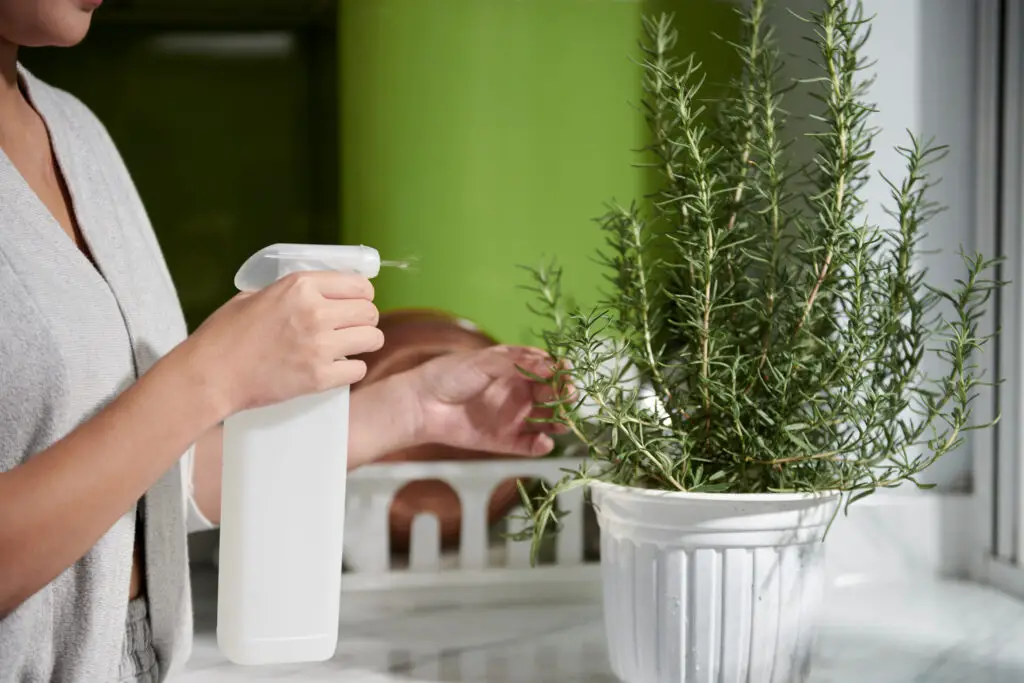
Home remedies can also be effective in treating white spots on leaves. Baking soda and liquid soap can be mixed with water to create a spray that can be applied to the affected leaves. Mouthwash can also be used as a spray. Milk can be mixed with water and sprayed on the leaves to prevent the growth of fungus.
Cultural Controls
Cultural controls involve changing the growing conditions of the plant to prevent the growth of fungus. This can include ensuring proper air circulation around the plant, avoiding over-watering, and removing infected leaves as soon as they are noticed.
It is important to note that some treatment methods may be more effective than others depending on the type of white spots on the leaves. It is recommended to consult with a gardening expert or do further research to determine the best treatment method for the specific type of white spots on the leaves.
Prevention Strategies
Preventing small white spots on leaves is essential to keep your plants healthy and thriving. There are several preventive measures that you can adopt to minimize the risk of white leaf spot. Here are some effective prevention strategies:
1. Proper Watering
One of the most important things you can do to prevent white leaf spot is to water your plants properly. Overwatering can create a moist environment that encourages fungal growth, while underwatering can lead to stress and weaken the plant’s immune system. Make sure to water your plants deeply and infrequently, allowing the soil to dry out between waterings. Avoid watering the leaves and instead aim for the soil around the base of the plant.
2. Adequate Spacing
Proper spacing is crucial to prevent the spread of white leaf spot. When plants are too close together, they can create a humid microclimate that promotes fungal growth. Make sure to space your plants according to their mature size and growth habits. This will allow for adequate air circulation and help prevent the spread of disease.
3. Regular Pruning
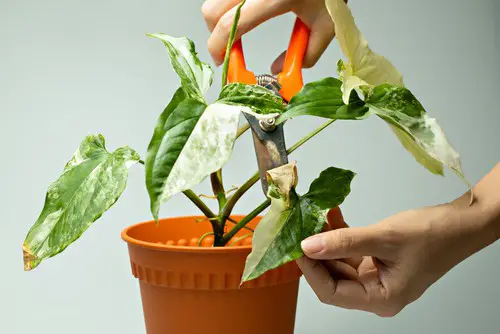
Regular pruning is an essential part of plant maintenance and can help prevent the spread of white leaf spot. Pruning removes infected leaves and branches, reducing the overall fungal load on the plant. Make sure to use clean cutting tools and sanitize them between cuts to prevent the spread of disease.
4. Effective Fertilizing
Proper fertilization can help keep your plants healthy and resistant to disease. Make sure to use a balanced fertilizer that provides essential nutrients without overfeeding your plants.
Overfertilization can weaken the plant’s immune system and make it more susceptible to disease. Make sure to follow the manufacturer’s instructions and avoid applying fertilizer to wet leaves.
Pests That Cause White Spots
White spots on leaves can be caused by various pests that feed on the sap of the plants. Here are some common pests that can cause white spots on leaves:
Mealybugs
Mealybugs are tiny insects that feed on the sap of plants and can cause white spots on leaves. They are usually found on the undersides of leaves and in the joints of the plant.
Mealybugs are covered in a white, waxy substance that makes them look like small cotton balls. They can also leave behind a sticky residue that attracts ants.
To get rid of mealybugs, one can use an insecticidal soap or a mixture of water and rubbing alcohol. It is also important to remove any heavily infested leaves or stems and isolate the infected plant.
Spider Mites
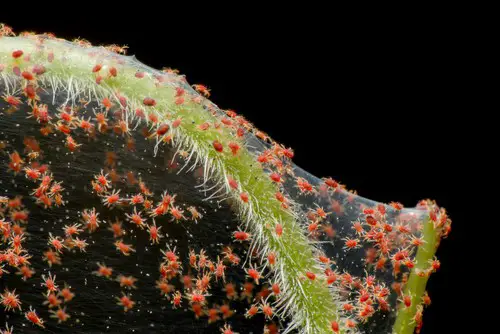
Spider mites are another common pest that can cause white spots on leaves. They are tiny, eight-legged creatures that are barely visible to the naked eye. Spider mites feed on the undersides of leaves and can cause them to turn yellow and fall off.
To get rid of spider mites, one can use a mixture of water and dish soap or neem oil. It is also important to keep the plant well-watered and misted, as spider mites thrive in dry conditions.
Aphids
Aphids are small, soft-bodied insects that feed on the sap of plants and can cause white spots on leaves. They are usually found on the undersides of leaves and can also cause the leaves to curl and distort.
To get rid of aphids, one can use a mixture of water and dish soap or neem oil. It is also important to remove any heavily infested leaves or stems and isolate the infected plant.
Effect on Different Plants
When it comes to small white spots on leaves, different plants can be affected differently. Here are some of the effects on various types of plants:
1. Houseplants
Indoor plants like African violets, begonias, ivy, jade, kalanchoe, and poinsettia commonly get powdery mildew. This fungal disease can cause small white spots on their leaves, which can eventually spread and cover the entire plant. Houseplants can also be affected by other diseases like downy mildew, which can cause yellowish spots on leaves.
2. Begonias
Begonias are susceptible to powdery mildew, which can cause white spots on their leaves. This disease can weaken the plant and make it more vulnerable to other diseases and pests. To prevent this, it is important to keep the plant well-ventilated and avoid overhead watering.
3. Roses
Roses can also be affected by powdery mildew, which can cause white spots on their leaves and stems. This disease can weaken the plant and reduce its ability to produce flowers. To prevent this, it is important to keep the plant well-pruned and to remove any infected leaves or stems.
4. Tomatoes
Tomatoes are susceptible to a range of diseases that can cause white spots on their leaves. These include powdery mildew, which can spread quickly in warm and humid conditions. Other diseases like leaf mold and early blight can also cause white spots on leaves and affect the plant’s ability to produce fruit.
5. Peppers

Peppers can also be affected by powdery mildew, which can cause white spots on their leaves and stems. This disease can weaken the plant and reduce its ability to produce fruit. To prevent this, it is important to keep the plant well-ventilated and avoid overhead watering.
6. Trees and Shrubs
Trees and shrubs can be affected by a range of diseases that can cause white spots on their leaves. These include powdery mildew, which can affect a wide range of plants including fruit trees, ornamental trees, and shrubs. Other diseases like leaf spot and canker can also cause white spots on leaves and affect the plant’s overall health.
Understanding Nutrient Deficiency and Viruses
Small white spots on leaves can indicate a variety of issues, including nutrient deficiencies and viruses. Understanding the differences between these two causes can help determine the best course of action for treatment.
Nutrient deficiencies occur when a plant doesn’t have enough of a certain nutrient to grow and thrive. Common nutrient deficiencies that can cause white spots on leaves include:
- Nitrogen deficiency: This can cause leaves to turn yellow and develop white spots.
- Phosphorus deficiency: This can cause leaves to turn dark green or purple and develop white spots.
- Potassium deficiency: This can cause leaves to develop white spots and yellow edges.
To address nutrient deficiencies, it’s important to determine which nutrient is lacking and adjust the plant’s fertilizer accordingly. A soil test can help determine which nutrients are present in the soil and which may need to be added.
Viruses can also cause small white spots on leaves. Common viruses that affect plants include:
- White spot disease: This fungal disease can cause white spots on leaves and lead to leaf drop.
- Wheat viruses: Soilborne mosaic viruses and SBWMV can cause yellow-green streaks on leaves and stunted growth.
- Tomato viruses: Phosphorus deficiencies can sometimes be mistaken for tomato viruses, which can cause white spots on leaves and lead to stunted growth and reduced yields.
Unfortunately, there is no cure for viruses in plants. The best course of action is to remove infected plants to prevent the virus from spreading to other plants in the area. It’s also important to practice good sanitation practices, such as washing hands and tools between working with different plants, to prevent the spread of viruses.
Dealing with Infected Plants
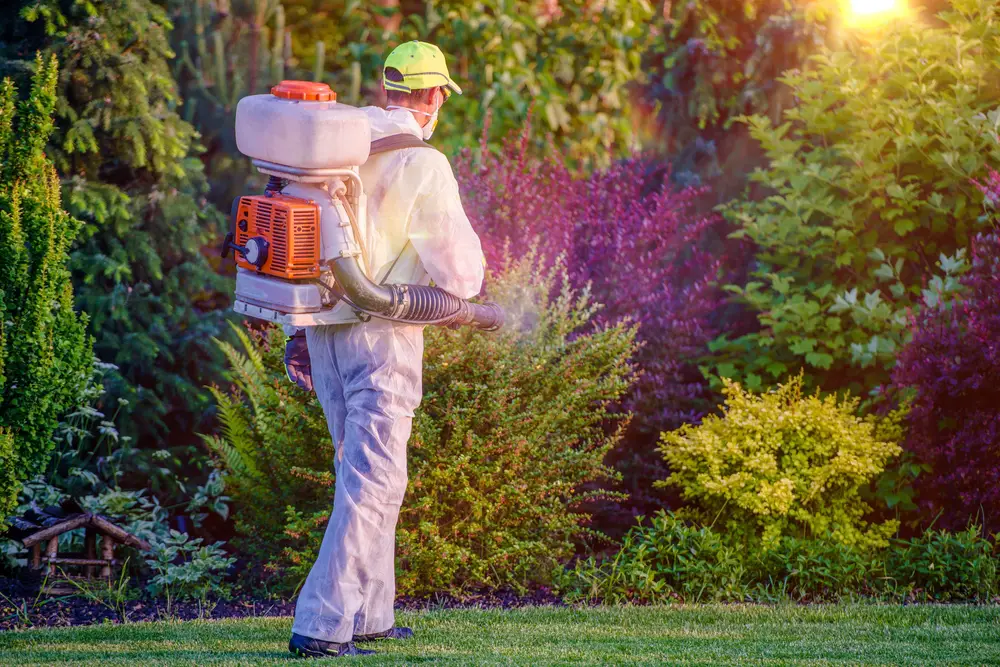
When a plant is infected with small white spots on its leaves, it is important to take action to prevent the spread of the disease. Here are some steps to follow:
- Identify the disease: The first step in dealing with infected plants is to identify the disease causing the white spots. Powdery mildew is a common cause of white spots on leaves and can be identified by its white, powdery appearance. Other diseases may have different symptoms, so it is important to do some research to identify the specific disease affecting your plant.
- Remove infected leaves: Once the infected plant has been identified, it is important to remove any infected leaves. This will help prevent the disease from spreading to other parts of the plant. Be sure to dispose of infected leaves in a sealed bag or container to prevent the spread of disease.
- Clean up debris: Debris around the plant, such as fallen leaves or dead plant material, can harbor disease and should be removed. Be sure to clean up the area around the infected plant to prevent the spread of disease.
- Avoid composting infected plant material: Infected plant material should not be added to compost piles, as the disease can survive and spread to other plants when the compost is used. Instead, dispose of infected plant material in a sealed bag or container.
- Water from below: Watering infected plants from above can spread disease. Instead, water the plant from below to prevent the spread of disease.
- Prune lower leaves: Pruning lower leaves can improve air circulation around the plant, which can help prevent the spread of disease. Be sure to use clean, sharp pruning shears to prevent the spread of disease.
Frequently Asked Questions
How to treat small white spots on leaves
Treating small white spots on leaves depends on the cause of the spots. If the spots are caused by a fungal disease, such as powdery mildew, it is important to remove the affected leaves and treat the plant with a fungicide.
If the spots are caused by pests, such as mealybugs or spider mites, it is important to remove the affected leaves and treat the plant with an insecticidal soap or neem oil.
How to get rid of small white spots on leaves
Getting rid of small white spots on leaves involves identifying the cause of the spots and treating the plant accordingly. In addition to removing affected leaves and treating the plant with fungicides or insecticides, it is important to improve growing conditions, such as increasing air circulation and reducing humidity levels.
What is the small white spot on my plants?
The small white spot on plants could be caused by a variety of factors, including fungal diseases, pests, or environmental stress. It is important to identify the cause of the spots in order to properly treat the plant.
Why is there white stuff on my plant leaves?
White stuff on plant leaves could be caused by a fungal disease, such as powdery mildew, or by pests, such as mealybugs or spider mites. It could also be caused by environmental stress, such as high humidity levels.
What are the white spots on my indoor plants?
White spots on indoor plants could be caused by a variety of factors, including fungal diseases, pests, or environmental stress. It is important to identify the cause of the spots in order to properly treat the plant.
How do you treat white spots on leaves?
Treating white spots on leaves involves identifying the cause of the spots and treating the plant accordingly.
This may involve removing affected leaves, treating the plant with fungicides or insecticides, and improving growing conditions, such as increasing air circulation and reducing humidity levels. It is important to follow the instructions on the fungicides or insecticides carefully to ensure safe and effective treatment.

Hey, I’m Lisa and I’ve been an avid gardener for over 30 years. I love writing, talking and living in the garden! Feel free to connect with me on my socials below

